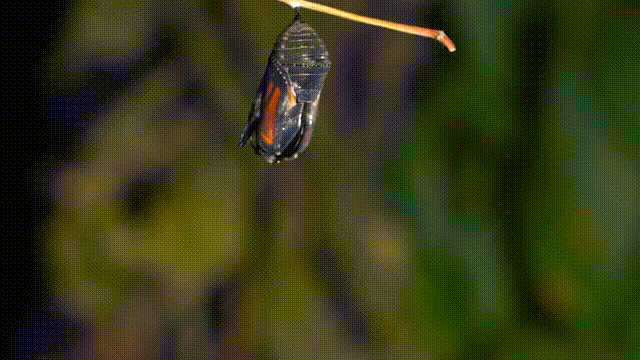How did metamorphosis evolve?
3 minute readPublished: Monday, November 17, 2025 at 10:00 am

The Evolutionary Journey of Metamorphosis
The insect world, teeming with millions of species, showcases a remarkable biological process: metamorphosis. This transformation, from a larval stage to a fully formed adult, is a key to the success of insects, with over 80% of species undergoing complete metamorphosis.
The story of metamorphosis begins approximately 480 million years ago with the earliest insects. These early insects resembled miniature versions of their adult forms, growing larger through molting. However, around 400 million years ago, genetic mutations led to incomplete metamorphosis, where insects, known as hemimetabolous insects, began their lives as nymphs. These nymphs, while resembling adults, possessed wing pads that developed with each molt. This evolutionary step, allowing for the gradual development of delicate wings, was a significant advantage.
Further genetic shifts, occurring roughly 50 million years later, gave rise to holometabolous insects, which undergo complete metamorphosis. These insects emerge as larvae, worm-like creatures vastly different from their adult forms. This separation of life stages offers several advantages. Larvae and adults can specialize in different functions, with larvae often focused on feeding and adults on reproduction. This also reduces resource competition, as larvae and adults can consume different food sources.
While the benefits of complete metamorphosis are clear, the exact evolutionary path remains a subject of scientific debate. One theory suggests that complete metamorphosis evolved from the nymph stage, while another proposes that the larval stage originated from an embryonic phase. Scientists have identified key genes controlling the different stages of complete metamorphosis, but how these genes function in simpler insects remains a mystery.
BNN's Perspective:
The evolution of metamorphosis is a fascinating example of nature's ingenuity. While the details of its origins are still being explored, the success of this process is undeniable. The ability of insects to adapt and diversify through metamorphosis highlights the power of evolution and the ongoing discoveries within the natural world.
Keywords: metamorphosis, insects, evolution, larvae, nymphs, complete metamorphosis, incomplete metamorphosis, genetics, wings, hemimetabolous, holometabolous, biology, entomology, scientific research, insect species